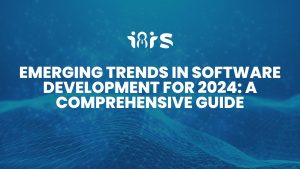What is the Software Development Life Cycle (SDLC):
The Software Development Life Cycle (SDLC) is a proven, efficient framework used by development teams to craft superior software cost-effectively and within time constraints. SDLC aims to diminish project risks through proactive planning, ensuring that the software not only aligns with but also exceeds customer expectations in production and thereafter. This approach delineates distinct steps, facilitating task allocation, execution, and assessment in software creation.
Why SDLC Matters:
Navigating the complexities of software development, marked by evolving requirements, technological advancements, and multi-disciplinary collaboration, can be daunting. The SDLC methodology offers a structured management approach, punctuated by specific deliverables at each development stage. This results in a unified vision and objective for all stakeholders, coupled with a strategic roadmap to achieve these goals.
Benefits of SDLC:
- Enhanced visibility for all stakeholders in the development process
- Efficient project estimation, planning, and scheduling
- Superior risk management and cost prediction
- Streamlined software delivery, boosting customer satisfaction
How SDLC Operates:
The SDLC encompasses several stages, each critical to building a software application. This journey from conception to deployment involves adding new features and debugging, tailored to each development team’s unique approach. Below, we break down these typical phases.
Planning: Activities like cost-benefit analysis, scheduling, and resource allocation. Stakeholders, including customers and experts, contribute to a software requirement specification document, setting the project’s tone.
Design: Engineers examine requirements, opting for the best solutions, technology choices, and development tools to integrate the software into existing IT infrastructure seamlessly.
Implementation: The team translates requirements into code, tackling smaller tasks daily to materialize the final product.
Testing: A blend of automated and manual tests ensures the software is bug-free and meets customer expectations.
Deployment: The team transitions the software from a build environment to production, allowing users access to the latest version.
Maintenance: Ongoing bug fixes, performance monitoring, and user experience improvements.
Different SDLC Models:
SDLC models conceptualize the process for efficient implementation. These models vary in the sequence of phases to optimize development. Some prominent models include:
Waterfall: A sequential approach, where each phase flows into the next.
Iterative: Begins with a basic software version, enhanced iteratively over time.
Spiral: Merges iterative development with a linear flow, emphasizing risk analysis.
Agile: Breaks down the SDLC into rapid, incremental cycles for swift adaptation to change.
Each model has its advantages and challenges, catering to different project sizes and complexities.
Incorporating Security in SDLC:
Traditionally, security testing was a post-development activity, leading to overlooked bugs and security risks. Modern approaches integrate security throughout the SDLC, following DevSecOps practices and continuous security assessments.
Comparing SDLC to Other Lifecycle Methodologies:
SDLC is often compared to other lifecycle management methodologies. For instance, the Systems Development Life Cycle (SDLC) refers to a broader process encompassing IT systems, including hardware and software integration. Application Lifecycle Management (ALM) spans the entire lifespan of an application, from inception to decommissioning, encompassing multiple SDLCs.
In summary, understanding and implementing the right SDLC model is essential for successful, secure, and efficient software development, adapting to evolving business needs and technological advancements.





